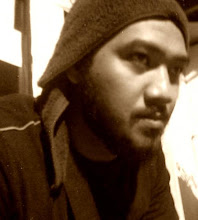
THE SHORT HISTORY OF DREADLOCK
BY: CULTURE
From Wikipedia, the free encyclopedia
Dreadlocks, also called locks or dreads, are interlocked coils of hair which form by themselves, in all hair types, if the hair is allowed to grow naturally without grooming for a long period of time. Dreadlocks are associated most closely with the Rastafari movement.
The first known examples of dreadlocks date back to ancient dynastic Egypt. Examples of Egyptians wearing locked hairstyles and wigs have appeared on bas-reliefs, statuary and other artifacts. Mummified remains of ancient Egyptians with locks, as well as locked wigs, also have been recovered from archaeological sites.The Hindu deity Shiva and his followers were described in the scriptures as wearing "jaTaa", meaning "twisted locks of hair", probably derived from the Dravidian word "caTai", which means to twist or to wrap.The Greeks, the Pacific Ocean peoples,the Naga people and several ascetic groups within various major religions have at times worn their hair in locks, these include the Nazirites of Judaism, the Sadhus of Hinduism, the Dervishes of Islam and the Coptic Monks of Christianity, among others. The very earliest Christians also may have worn this hairstyle.Particularly noteworthy are descriptions of James the Just, first Bishop of Jerusalem, who wore them to his ankles.Locks may have also been part of Mesoamerican culture before the 16th century Spanish conquest.
In Senegal, the Baye Fall, followers of the Mouride movement, a sect of Islam indigenous to the country which was founded in 1887 by Shaykh Aamadu Bàmba Mbàkke, are famous for growing locks and wearing multi-colored gowns. Cheikh Ibra Fall, founder of the Baye Fall school of the Mouride Brotherhood, claims that he was "the first dread in West Africa".
In Senegal, the Baye Fall, followers of the Mouride movement, a sect of Islam indigenous to the country which was founded in 1887 by Shaykh Aamadu Bàmba Mbàkke, are famous for growing locks and wearing multi-colored gowns. Cheikh Ibra Fall, founder of the Baye Fall school of the Mouride Brotherhood, claims that he was "the first dread in West Africa".
In Jamaica the term dreadlocks was first recorded in the 1950s as a term for the "Young Black Faith", an early sect of the Rastafari which began among the marginalized poor of Jamaica in the 1930s, when they ceased to copy the particular hair style of Haile Selassie I of Ethiopia and began to wear dreadlocks instead. It was said that the wearer lived a "dread" life or a life in which he feared God, which gave birth to the modern name 'dreadlocks' for this ancient style.
Most Rastafari still attribute their dreadlocks to Selassie as well as the three Nazarite vows, in the Book of Numbers, the fourth of the books of the Pentateuch.
All the days of the vow of his separation there shall no razor come upon his head: until the days be fulfilled, in the which he separateth himself unto the LORD, he shall be holy, and shall let the locks of the hair of his head grow. (Numbers 6:5, KJV)
Nazarites for life who wore locks and were mentioned in the Bible include the Nazarites Samuel, John the Baptist, and probably the most famous biblical figure with locked hair, Samson, who, according to scripture, had seven locks and lost his great strength when they were cut.
Most Rastafari still attribute their dreadlocks to Selassie as well as the three Nazarite vows, in the Book of Numbers, the fourth of the books of the Pentateuch.
All the days of the vow of his separation there shall no razor come upon his head: until the days be fulfilled, in the which he separateth himself unto the LORD, he shall be holy, and shall let the locks of the hair of his head grow. (Numbers 6:5, KJV)
Nazarites for life who wore locks and were mentioned in the Bible include the Nazarites Samuel, John the Baptist, and probably the most famous biblical figure with locked hair, Samson, who, according to scripture, had seven locks and lost his great strength when they were cut.

Tidak ada komentar:
Posting Komentar